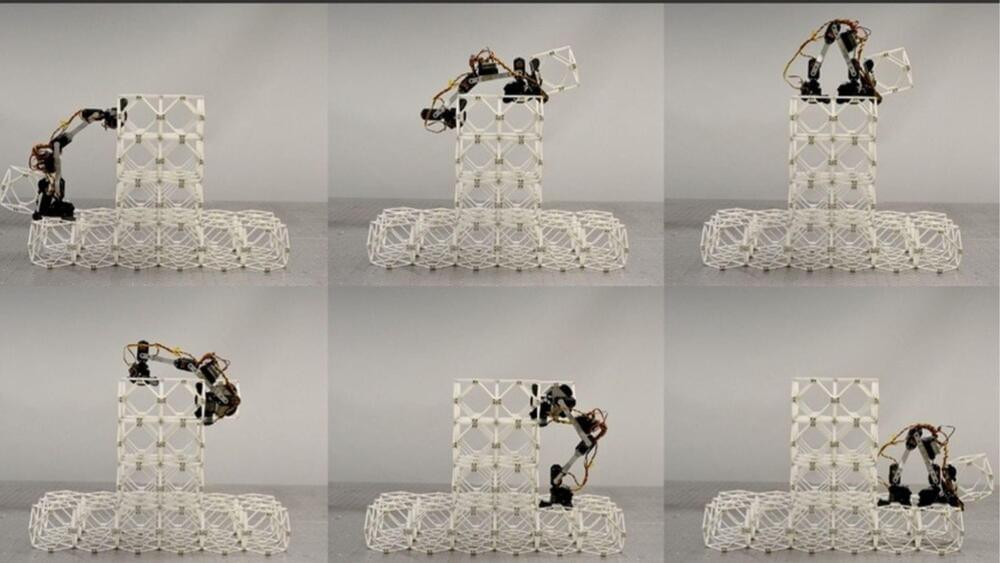Ditching transistors for ferroelectric diodes, this new computer architecture could prove up to 100 times faster than current tech.



Colon cancer is the second deadliest cancer in the US. Early detection is important but finding and diagnosing polyps is difficult. 2 AI-powered endoscopes have been developed in Japan to tackle the problem. One can judge a lesion’s malignancy in 0.4 second with almost 100% accuracy. The other indicates lesions during an exam, even indistinct ones, like a car navigation system. We also introduce fermented Japanese foods that are beneficial for gut health and explain how they should be eaten.

Researchers advance efforts to create groups of robots that could construct almost anything.
When it comes to the manufacturing of commercial aircraft, different parts are manufactured at various locations. Before finally bringing them all together in a central plant and putting the finished aeroplane together, the tail components, the fuselage, and the wings are made at different plants.
Many other large structures, besides aircraft, are also built in sections.
MIT
Before finally bringing them all together in a central plant and putting the finished aeroplane together, the tail components, the fuselage, and the wings are made at different plants.
Quick update/ reminder for Neuralink Event.
Twitter: https://twitter.com/ryantanaka3
Neura Pod is a series covering topics related to Neuralink, Inc. Topics such as brain-machine interfaces, brain injuries, and artificial intelligence will be explored. Host Ryan Tanaka synthesizes informationopinions, and conducts interviews to easily learn about Neuralink and its future.
Support: https://www.patreon.com/neurapod/
Please consider supporting by joining the channel above, or sharing my other company website with retirees: https://www.reterns.com/. Opinions are my own. Neura Pod receives no compensation from Neuralink and has no affiliation to the company.
#Neuralink #ElonMusk #Tesla


Cornell University researchers have created an interface that allows users to handwrite and sketch within computer code – a challenge to conventional coding, which typically relies on typing.
The pen-based interface, called Notate, lets users of computational, digital notebooks open drawing canvases and handwrite diagrams within lines of traditional, digitized computer code.
Powered by a deep learning model, the interface bridges handwritten and textual programming contexts: notation in the handwritten diagram can reference textual code and vice versa. For instance, Notate recognizes handwritten programming symbols, like “n”, and then links them up to their typewritten equivalents.
Dr. Svitlana Volkova, Ph.D. (https://www.pnnl.gov/people/svitlana-volkova) is Chief Scientist, Decision Intelligence and Analytics, National Security Directorate, Pacific Northwest National Laboratory (PNNL), which is one of the United States Department of Energy national laboratories, managed by the Department of Energy’s (DOE) Office of Science.
Dr. Volkova is a recognized leader in the field of computational social science and computational linguistics and her scientific contributions and publication profile cover a range of topics on applied machine learning, deep learning, natural language processing, and social media analytics.
Dr. Volkova’s research focuses on understanding, predicting, and explaining human behavior, interactions, and real-world events from open-source social data and her approaches help advance effective decision making and reasoning about extreme volumes of dynamic, multilingual, multimodal, and diverse real-world unstructured data.
Dr. Volkova has a Ph.D. in Computer Science from Johns Hopkins University, Center for Language and Speech Processing, and an M.S. in Computer Science, from Kansas State University.



This superintelligent AI is quite astounding learning similarly to a human even. What I am wanting someday is from labor to digital commerce like bitcoin to even stock markets to everything could essentially automated. Also with the neuralink we could essentially have similar intelligence as the superintelligence allowing for humans to attain a superintelligent level of abilities. I think with DNA computers could be better than essentially for implants or essentially downloading information onto human DNA computers or even brain downloads from simple impulses from devices could give binary code files for abilities or making the superintelligence abilities a simple download rather than other forms of technology.
OpenAI has always focused on artificial intelligence (AI) and machine learning advances that benefit humanity. Recently, the company successfully trained a bot to play Minecraft using more than 70,000 hours of gameplay videos. The achievement is far more than just a bot playing a game. It marks a giant stride forward in advanced machine learning using observation and imitation.